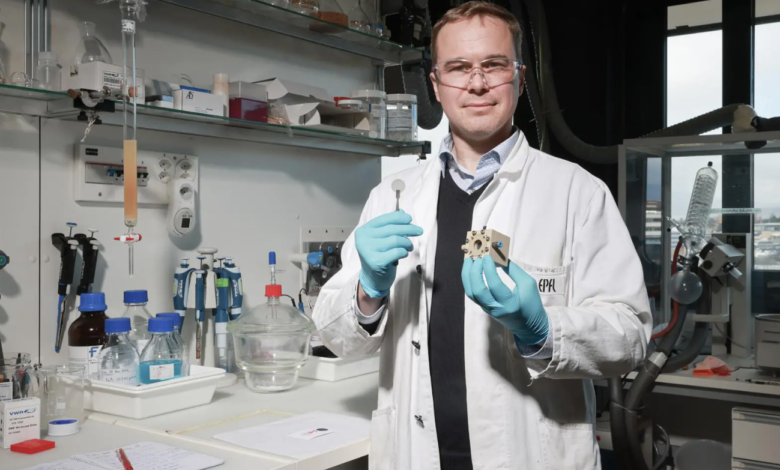From EPFL the artificial leaf that produces hydrogen from the air

Hydrogen from the humidity of the air, the latest frontier of photoelectrochemical technologies
An artificial “leaf” capable of producing hydrogen from the air only thanks to solar energy. This is the device created by a group of chemical engineers from the École Polytechnique Fédérale de Lausanne (EPFL), Switzerland. The team created new electrodes for special solar cells that couple semiconductor-based photon collection to the direct splitting of air-contained water.
The ability to build systems for the efficient and economical conversion of sunlight into chemical energy continues to be a challenging goal for science. In this field, photoelectrochemical cells (PEC) offer the most interesting opportunities, being able to somehow replicate the process of photosynthesis but with greater theoretical efficiencies. However, there are limitations to the marketability of this technology. These cells normally use semiconductors immersed in liquid solutions, making them more complex to scale.
read also Floating artificial leaves cross rivers producing solar fuels
But what if gases were used instead of liquids? And more precisely air? From this consideration the work of the EPFL, that immediately had to solve a great challenge. In order for PEC to exploit atmospheric humidity, specific gas diffusion electrodes are needed. These elements, however, are generally made of graphite carbon or metals, opaque materials that significantly limit the collection of light.
Transparent gas diffusion electrodes
As Hillary Sanctuary explains at the EPFL site, the team created a transparent gas diffusion power line to facilitate exposure to sunlight, but also highly porous to maximize contact with the water molecules contained in the air. In detail, the engineers used quartz fibers to transform them into sheets of felt through high-temperature melting. Subsequently, they coated the sheets with a transparent film of tin oxide enriched with fluoride.
“Developing our prototype device was challenging since transparent gas-diffusion electrodes have not been previously demonstrated, and we had to develop new procedures for each step. However, since each step is relatively simple and scalable, I think that our approach will open new horizons for a wide range of applications starting from gas diffusion substrates for solar-driven hydrogen production.”
The work demonstrated the feasibility of producing hydrogen from the air by creating a polymer semiconductor photocathode membrane with photoordinary density (at a Sun) of the order of 1 mA/cm2 and with a Faraday efficiency of 40%.





